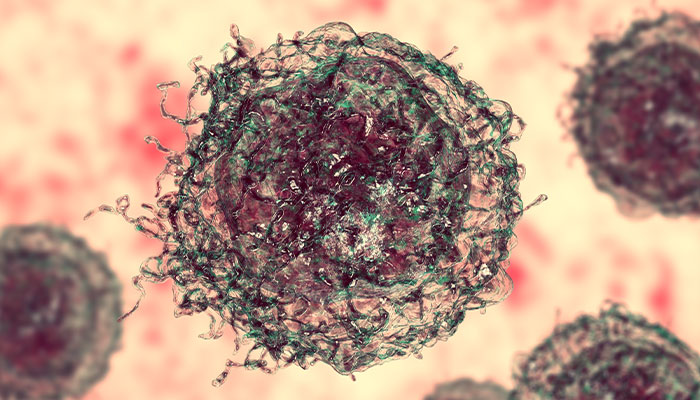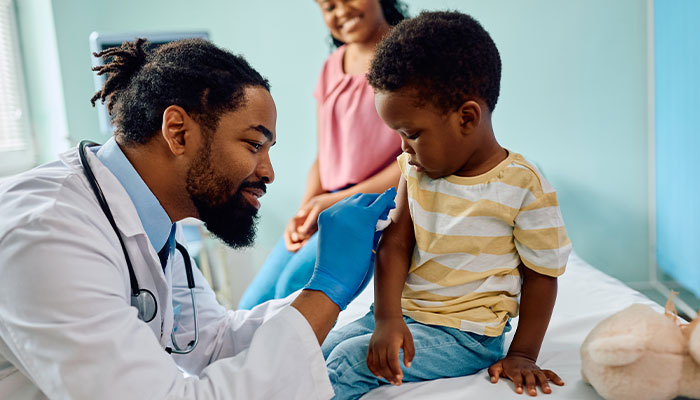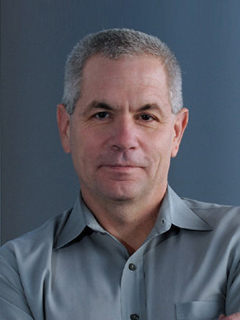HOW CAN WE HELP YOU? Call 1-800-TRY-CHOP
In This Section
Researchers Aim to Personalize Neuroblastoma Vaccines to Prevent Cancer Recurrence

John Maris, MD, is co-leading a study that aims to develop patient-specific neuroblastoma vaccines that could be applied to patients in remission to prevent relapse.
Children with high-risk neuroblastoma, an aggressive solid tumor, have a 50% chance of survival, despite surgery, multiple cycles of chemotherapy, and intensive radiation therapy. Of the children who do survive, the majority go into remission — and then experience a relapse.
The need for novel therapeutic interventions to decrease the incidence of relapse, increase overall survival, and reduce devastating toxicities associated with standard therapy is urgent. Researchers at Children's Hospital of Philadelphia and collaborators are taking up the charge, with a grant from the National Cancer Institute Pediatric Immunotherapy Network.
CHOP pediatric oncologist John Maris, MD, is co-leading a study with Stephen Schoenberger, PhD, of the La Jolla Institute for Immunology that aims to develop patient-specific cancer vaccines that would be applied to patients in remission, engaging the adaptive immune system to prevent their disease from coming back.
"We're not going to prevent neuroblastoma from occurring in the first place, but hopefully we can prevent it from relapsing," said Dr. Maris, the Giulio D'Angio Endowed Chair in Neuroblastoma Research, "or possibly to induce remissions when we can't get there with our standard approaches."
CHOP Takes Personalized Cancer Vaccines a Step Further

Unlike the annual flu shot that is developed for everyone that year, cancer vaccines are unique for each patient.
Cancer vaccines are therapeutic prospects because of their tumor-specific nature with few off-target effects. Unlike the annual flu shot that is developed for everyone that year, cancer vaccines are unique for each patient.
These personalized vaccines are developed from a patient's biopsied tumor. Once it is sequenced, specific antigens are identified as targets, and then immune cells can be trained to find them. The personalized vaccine is injected into the patient, enabling the immune system to recognize and attack the malignant tumors.
When a child has a biopsy at CHOP, the sample first goes to Pathology to make sure the clinicians know what they are dealing with, but anything left-over either gets discarded or gets banked, Dr. Maris said. Between CHOP's Biobank Resource Center and the Cancer Center's protocol to bank tumor specimens, the researchers have identified about 50 patients with neuroblastoma to participate in this study.
"We are very fortunate to have not only the tumors from these patients, but blood specimens too to be able to perform the testing," Dr. Maris said. "We want to know if the candidate vaccine is capable of making the body's immune cells react against the cancer and then see if it can eradicate tumors."
Collaboration Using Bioinformatics
With this new grant, the collaborative research team is taking a novel approach from other cancer vaccine development projects, by testing their predictions before they make the patient-specific vaccine.
The first step is to perform next-generation sequencing of every one of the three billion DNA genetic codes in the tumor with the High Throughput Sequencing Core at CHOP. Once the research team figures out the mutations, those data are transferred to Dr. Schoenberger. By using advanced bioinformatic approaches that Dr. Schoenberg's lab developed, they run their computational algorithm to make predictions of what the patient's blood immune cells might react to and which of these mutations are best to engineer into a vaccine.
"And that's important when you need to whittle down what you're going to manufacture into a vaccine," Dr. Maris said. "The idea is that for every one patient, you do not rely just on a single mutation. You make a vaccine that has about a dozen or so of these mutations engineered into a vaccine for the patient's immune system to react to."
Next, with samples of the patient's blood that were taken prior to any treatment, they validate their predictions. Timothy Spear, MD, PhD, a hematology/oncology fellow in the Maris Lab, is leading these efforts with a novel immuno-competent animal model he developed that reflects exactly what they see in children with high-risk neuroblastoma. These proof-of-concept studies will be critical to moving this technology into a clinical trial.
"For years it was felt that this concept of making vaccines specific to our patients was not feasible," Dr. Maris said. "With this grant, we believe it is not only feasible — it can work. To do something completely new and something that has the realistic chance to impact patients is what drives our entire team."
As a pediatric oncologist, Dr. Maris did not cross work-paths with Dr. Schoenberger, who is an expert vaccinologist — before working on this grant. After learning of each other's research, they recognized they could do something together that neither of them could have done on their own.
"I could not do this project without Dr. Schoenberger's expertise in figuring out — once we get the tumor from the patient and do all the sequencing that we do at CHOP — how to turn that information into a vaccine," Dr. Maris said. "And Dr. Schoenberger could not do this without the information that we would provide."
